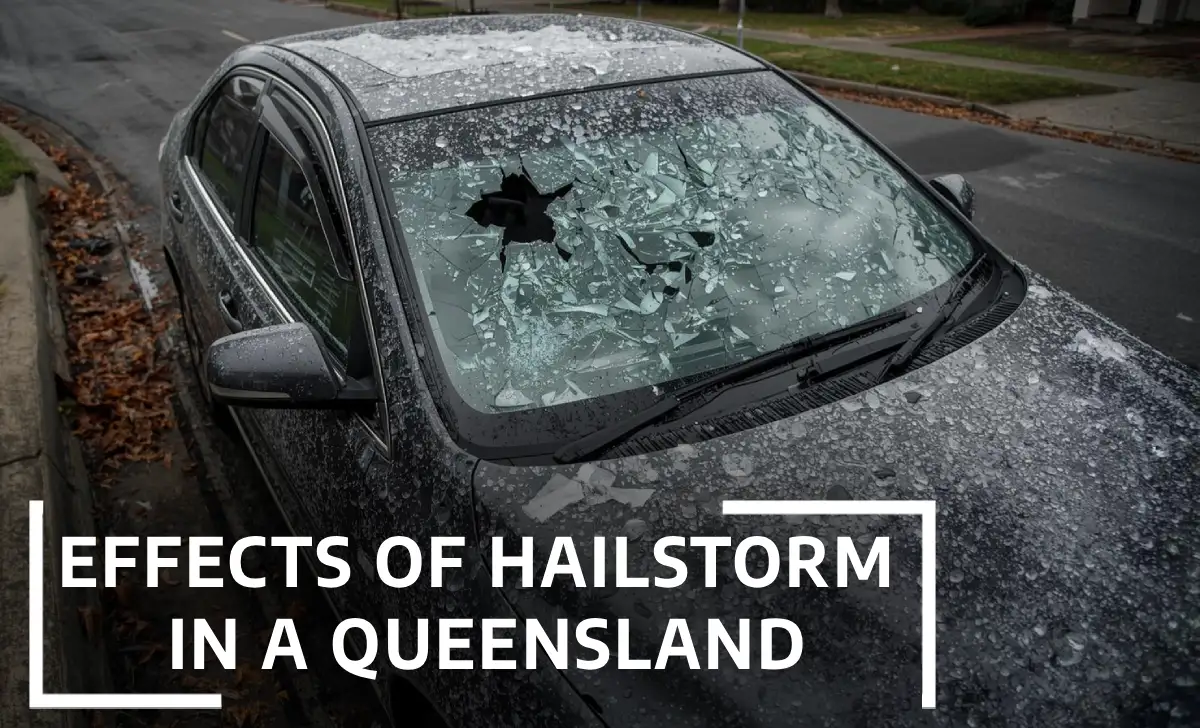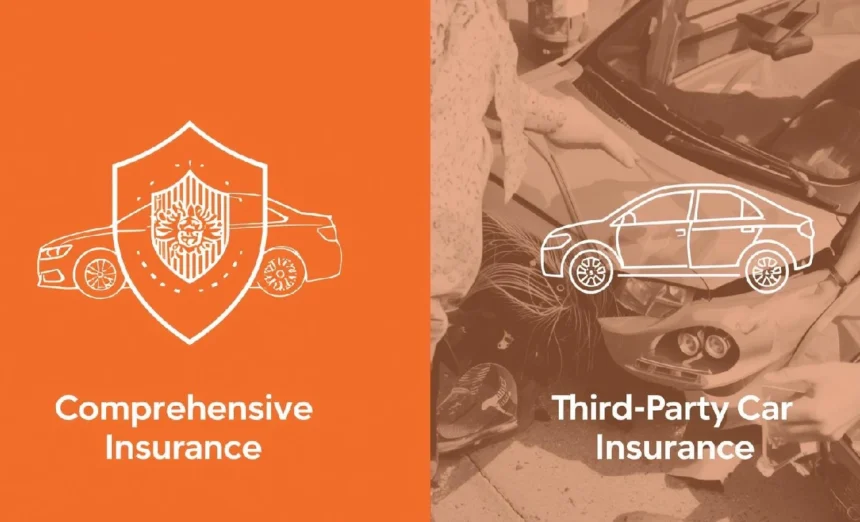Queensland drivers face a crucial choice when purchasing car insurance: should you invest in comprehensive coverage or save money with third party protection? With over 3.2 million registered vehicles across the Sunshine State, this decision affects your wallet and your peace of mind.
- Understanding Car Insurance Types in Queensland
- Queensland’s Compulsory Third Party Requirements
- Real Queensland Insurance Costs Compared
- Weighing the Pros and Cons for Queensland Drivers
- Choosing Your Ideal Coverage Level
- Calculating Your Vehicle’s Current Worth
- Balancing Budget and Risk Tolerance
- Reviewing Policy Features and Extras
- Money-Saving Strategies for Queensland Drivers
- Conclusion
The right choice depends on your car’s value, your driving habits, and your financial situation. This guide breaks down both options with real Queensland examples, current pricing data, and practical advice to help you make an informed decision.
Understanding Car Insurance Types in Queensland
Queensland drivers can choose from two main types of optional car insurance beyond the mandatory Compulsory Third Party (CTP) coverage. Each serves different needs and budgets.
What Comprehensive Car Insurance Covers
Comprehensive insurance provides the broadest protection for Queensland drivers. Your policy covers damage to your own vehicle from accidents, theft, fire, storms, and vandalism. Most comprehensive policies also include third party property damage and personal liability coverage.
Common extras with comprehensive policies include roadside assistance, rental car allowances, and coverage for personal belongings stolen from your car. RACQ and Suncorp, two major Queensland insurers, typically include these benefits in their comprehensive packages.
What Third Party Car Insurance Covers
Third party property insurance only pays for damage you cause to other people’s vehicles and property. If you crash into someone else’s car, their fence, or a shopfront, your insurer covers those repair costs up to your policy limit.
Your own vehicle damage remains your responsibility with third party coverage. Many insurers offer an optional Fire & Theft add-on for an additional premium, providing some protection for your own car without the full comprehensive cost.
Queensland’s Compulsory Third Party Requirements
All Queensland drivers must carry Compulsory Third Party (CTP) insurance, also known as a “Green Slip” in other states. This mandatory coverage protects you against personal injury claims but doesn’t cover property damage or your own vehicle.
How CTP Works in Queensland
CTP premiums are built into your vehicle registration fee through the Motor Accident Insurance Commission (MAIC). Current CTP costs range from $342 to $575 annually depending on your vehicle type and location within Queensland.
The scheme covers medical expenses, rehabilitation costs, and income loss for people injured in accidents involving your vehicle. However, CTP provides zero coverage for vehicle damage or property destruction.
Adding Optional Coverage Beyond CTP
Most Queensland drivers purchase additional third party property or comprehensive insurance to fill CTP’s coverage gaps. Without optional insurance, you’re personally liable for property damage costs, which can easily reach tens of thousands of dollars in serious accidents.
Budget Direct and other insurers offer third party property policies starting around $200 annually for basic coverage, making this minimum additional protection affordable for most drivers.
Real Queensland Insurance Costs Compared
Insurance premiums vary significantly across Queensland based on location, crime rates, and weather patterns. Here’s what drivers actually pay in 2024.
Brisbane vs Regional Premium Examples
A 30-year-old Brisbane driver with a clean record pays approximately $1,200-$1,800 annually for comprehensive coverage on a $25,000 sedan. The same driver in Townsville might pay $1,000-$1,500, reflecting lower metropolitan congestion and crime rates.
Third party property coverage costs $300-$500 in Brisbane compared to $250-$400 in regional areas like Cairns or Toowoomba. These differences reflect varying accident frequencies and repair costs across different Queensland regions.
Factors Affecting Your Queensland Premiums
Your postcode significantly impacts premiums due to local risk factors. Areas with higher storm activity, like the Far North Queensland coast, typically see elevated comprehensive insurance costs due to weather-related claims.
Vehicle storage also matters. Brisbane drivers parking on busy streets pay more than those with secure garage parking. Your driving history, age, and annual kilometres driven further influence your final premium calculations.

Weighing the Pros and Cons for Queensland Drivers
Each coverage type offers distinct advantages and limitations for Sunshine State motorists.
When Comprehensive Makes Financial Sense
Comprehensive insurance suits newer vehicles, financed cars, or any vehicle worth more than $10,000. Queensland’s severe weather seasons make comprehensive coverage particularly valuable for protecting against storm damage, flooding, and hail.
If you’re still paying off your car loan, most lenders require comprehensive coverage to protect their investment. The peace of mind knowing your vehicle is protected often justifies the higher premiums for many Queensland families.
When Third Party Coverage Is Sufficient
Older vehicles with market values below $5,000 often make poor candidates for comprehensive coverage. If your annual comprehensive premium approaches 20% of your car’s value, third party protection usually makes more financial sense.
Rural Queensland drivers covering minimal kilometres might also prefer third party coverage, especially if they have emergency savings to replace their vehicle if needed.
Choosing Your Ideal Coverage Level
Making the right insurance decision requires evaluating your specific circumstances and risk tolerance.
Calculating Your Vehicle’s Current Worth
Use RedBook or similar valuation tools to determine your car’s current market value. RACQ members can access free vehicle valuations through their membership portal. This figure helps determine if comprehensive premiums justify the potential payout.
Consider your vehicle’s depreciation rate. A five-year-old car losing value quickly might not warrant comprehensive coverage much longer.
Balancing Budget and Risk Tolerance
Set a realistic insurance budget considering your other financial priorities. Remember that higher excess amounts reduce premiums but increase your out-of-pocket costs when claiming.
Queensland’s unpredictable weather patterns and busy highways create genuine risks for all drivers. Factor these regional challenges into your coverage decision.
Reviewing Policy Features and Extras
Compare roadside assistance, rental car provisions, and claim settlement processes between insurers. Some Queensland insurers offer specific benefits like free windscreen repairs or discounted services through local partners.
Read policy documents carefully to understand exclusions, particularly for storm damage or flooding, which affect many Queensland regions annually.
Money-Saving Strategies for Queensland Drivers
Smart Queensland drivers can reduce insurance costs without sacrificing essential protection.
Consider these proven cost-cutting approaches:
- Bundle home and car insurance with the same provider for multi-policy discounts
- Install approved anti-theft devices or GPS tracking systems
- Choose appropriate excess levels balancing affordability with savings
- Maintain a clean driving record and complete defensive driving courses
- Consider pay-as-you-drive options if you travel fewer than 10,000 kilometres annually
Many Queensland insurers offer loyalty discounts for long-term customers or safe driving rewards for claim-free periods. RACQ members receive additional discounts on insurance products through their membership benefits.

Conclusion
Comprehensive vs third party car insurance in Queensland ultimately comes down to your vehicle’s value, your financial situation, and your comfort with risk. New or valuable vehicles generally warrant comprehensive protection, while older cars might only need third party coverage.
Compare quotes from multiple Queensland insurers including RACQ, Suncorp, and Budget Direct to find the best value for your specific needs. Review policy details carefully and don’t just focus on premium costs.






